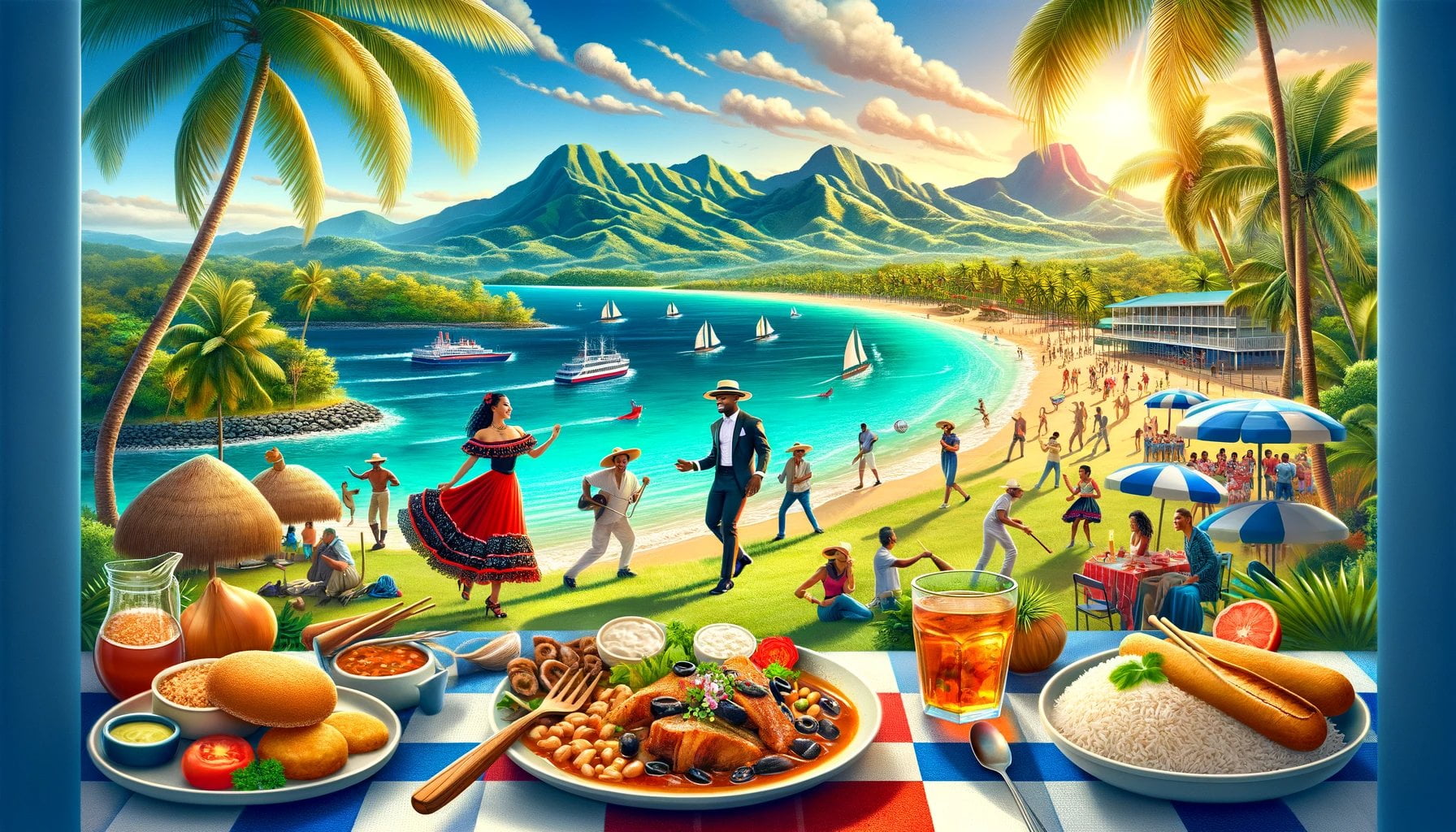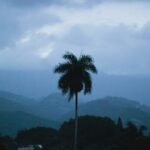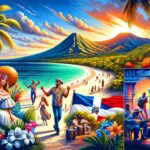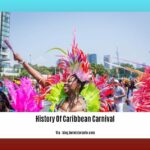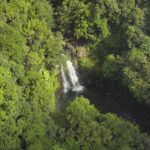Discover the captivating wonders of the vibrant Dominican Republic as we uncover a treasure trove of cool facts about this stunning Caribbean nation. From its rich history and diverse culture to its breathtaking geography and unique traditions, the Dominican Republic is a destination that offers so much more than meets the eye. Join us as we embark on a journey filled with untold cool facts, shedding light on the hidden gems and fascinating aspects that make this tropical paradise truly one-of-a-kind. Let’s dive into the vibrant tapestry of the Dominican Republic and unveil its untold cool facts.
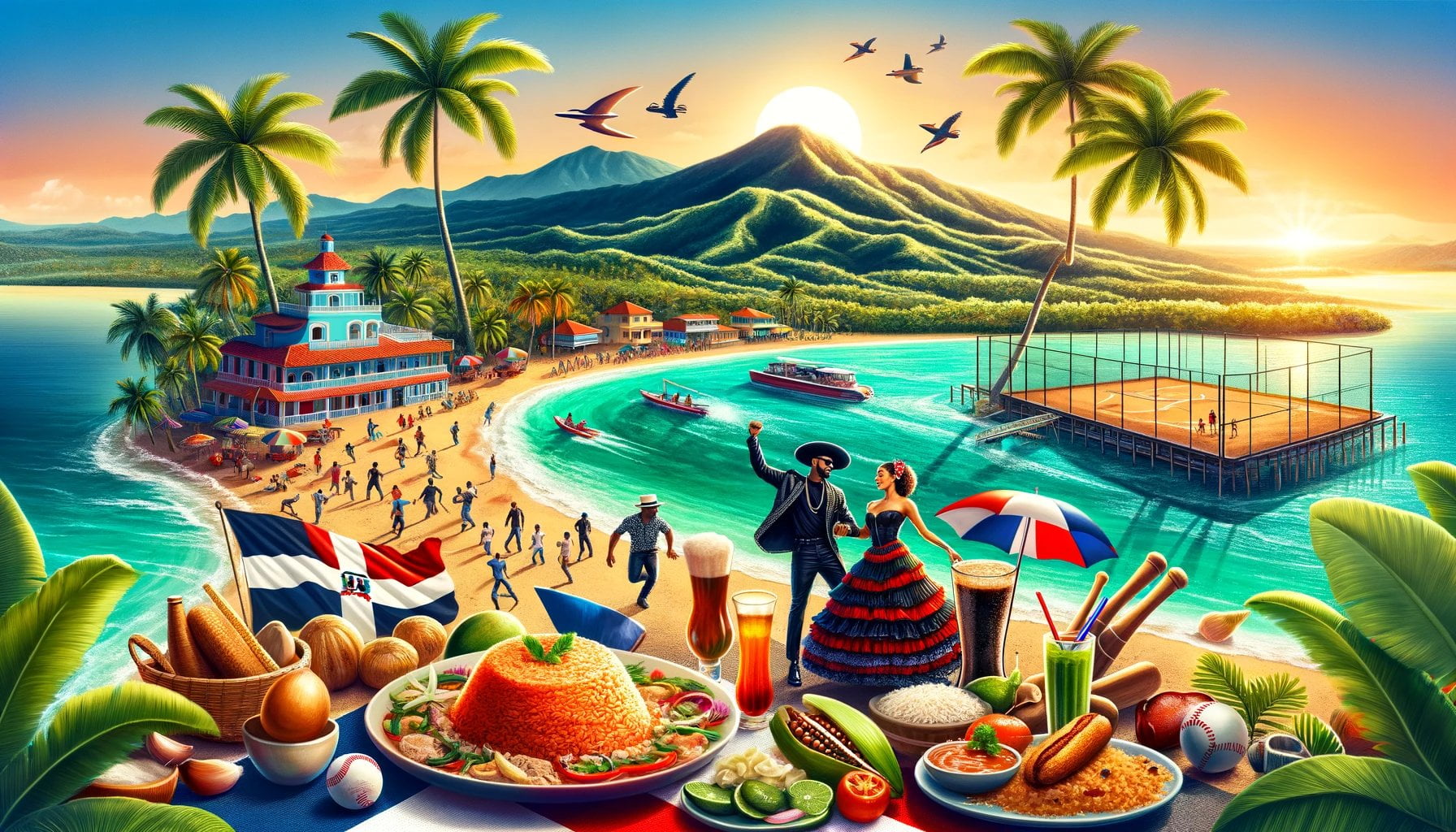
Key Takeaways:
- Baseball is the national sport of the Dominican Republic, and the country has produced many talented Major League Baseball players.
- The Carnival festival in February is a vibrant celebration of the country’s culture, with parades, music, dancing, and stunning costumes.
- The Dominican Republic is one of the top 10 global cocoa producers, known for its high-quality cocoa used in the production of fine chocolates.
- El Limón Waterfall is a popular natural attraction with a 50-meter-high waterfall surrounded by lush greenery.
- The country was named La Española by Christopher Columbus when he arrived in 1492.
- The people of the Dominican Republic are known as Dominicans and are known for their warm hospitality and strong sense of community.
- Family is an important aspect of Dominican culture, and many prefer living in joint families.
- Spanish is the official language of the Dominican Republic.
- The country has a diverse geography, with stunning beaches, mountains, and diverse ecosystems.
- The Dominican Republic has unique natural phenomena, such as the optical illusion where cars appear to roll uphill.
- The country is famous for its rich deposits of amber, which contain fossils of ancient plants and animals dating back millions of years.
Cool Facts About the Dominican Republic
The Dominican Republic is a fascinating country with a rich history, vibrant culture, and stunning natural attractions. Let’s dive into some cool facts that make this Caribbean destination truly unique.
Baseball: The National Sport
Did you know that baseball is the most popular sport in the Dominican Republic? It’s not just a game here, it’s a national obsession. The country has produced some of the most talented baseball players in the world, with around 100 Major League Baseball players hailing from the Dominican Republic. The passion for baseball runs deep in the veins of this nation.
Carnival: A Lively Celebration
Carnival in the Dominican Republic is a major festival that takes place in February. It’s a time of colorful parades, lively music, energetic dancing, and dazzling costumes. This is when the entire country comes alive, celebrating the vibrant and diverse culture that defines the Dominican Republic.
Cocoa Production Excellence
The Dominican Republic is among the top 10 global cocoa producers. The country’s rich and fertile soil provides ideal conditions for cocoa cultivation. The quality of Dominican cocoa is so esteemed that it is widely used in the production of fine chocolates around the world. Indulging in the Dominican Republic’s chocolate is truly a delight for the taste buds.
El Limón Waterfall: Nature’s Masterpiece
One of the most visited natural attractions in the Dominican Republic is the spectacular El Limón Waterfall. This breathtaking 50-meter-high waterfall, located in the Samaná Peninsula, is surrounded by lush greenery and picturesque landscapes. Visitors can take a hike or a horseback ride to reach the waterfall and immerse themselves in its captivating beauty.
Columbus and La Española
When Christopher Columbus arrived on the island in 1492, he named it La Española, which means “The Spanish” in English. The Dominican Republic has a fascinating history that dates back to this time. It later became a crucial colony of Spain, leaving behind a legacy that still influences the culture and traditions of the country today.
Dominican Warmth and Togetherness
The people of the Dominican Republic, known as Dominicans, are renowned for their warm hospitality and friendly nature. They take immense pride in their culture, traditions, and heritage. Dominicans are family-oriented and prefer living in joint families, where multiple generations coexist and support one another. Family values and relationships play a vital role in their daily lives.
Spanish: The Language of the Dominican Republic
Spanish is the official language of the Dominican Republic. It is spoken by the majority of the population and is an integral part of the country’s culture and identity. Learning a few basic Spanish phrases can greatly enhance your experience while visiting the Dominican Republic and connect you more deeply with the local people and culture.
Geographical Diversity
Spanning approximately 48,442 square kilometers, the Dominican Republic is geographically diverse. It is the second-largest country in the Caribbean, after Cuba. From stunning beaches to lush mountains and diverse ecosystems, the country offers a wide range of natural wonders waiting to be explored.
Unique Natural Phenomena
The Dominican Republic is home to some truly unique natural phenomena. One of them is an optical illusion known as “El Salto del Limón,” where cars appear to roll uphill. This interesting visual effect is caused by the surrounding terrain and leaves visitors puzzled and amazed by nature’s tricks.
Fossils in Amber: A Glimpse into the Past
The Dominican Republic is a treasure trove for paleontologists. The country’s rich deposits of amber contain fossils of ancient plants and animals, some dating back millions of years. These priceless fossils provide valuable insights into the Earth’s history and offer a fascinating glimpse into the past.
The Dominican Republic is a country that never fails to enchant and captivate with its culture, history, and natural wonders. Whether you’re a sports enthusiast, nature lover, or history buff, this Caribbean gem has something incredible to offer everyone.
Sources:
- Amazing Facts Home: 27 Fun Facts About Dominican Republic
- Facts.net: 80 Interesting Dominican Republic Facts You Should Know
Here are some fascinating facts that will blow your mind about the Pentagon! Make sure to click on the link to uncover all of them: 25 facts about the Pentagon.
Did you know that the Suez Canal is an engineering marvel? Discover more intriguing facts about this iconic waterway by clicking here: Facts about the Suez Canal.
Prepare to be amazed by the beauty of Bora Bora! Click on the link to explore some interesting facts about this tropical paradise: Interesting facts about Bora Bora.
Uncover the mysteries of the ancient world by delving into the facts about the Temple of Artemis. Click here to learn more: Facts about the Temple of Artemis.
The River Jordan holds a rich history and cultural significance. Dive into the facts about this legendary river by clicking on the link: Facts about the River Jordan.
Step onto the remarkable New River Gorge Bridge and discover fascinating facts about its construction and history. Click here to learn more: Facts about New River Gorge Bridge.
Key West is filled with intriguing stories and vibrant history. Click on the link to uncover 10 fascinating facts about this captivating island: 10 facts about Key West.
Embark on an exciting journey through the Dominican Republic with these three interesting facts. Click here to explore more: 3 interesting facts about Dominican Republic.
Calling all nature enthusiasts! Click on the link to discover some fun facts about Olympic National Park and its breathtaking landscapes: Fun facts about Olympic National Park.
Curious about the wonders of the North Central Plains of Texas? Click here to explore some fun facts about this diverse region: Fun facts about the North Central Plains of Texas.
The Dominican Republic: Unraveling the Enchanting World of Merengue Music and Dance
Imagine a place where the rhythm of life is inextricably intertwined with music and dance, where melodies fill the air and your hips can’t resist the urge to move. Welcome to the culturally vibrant and diverse Dominican Republic, a country known for its unique merengue music and dance. In this article, we’ll dive deep into the captivating world of merengue, exploring its roots, cultural significance, and its undeniable ability to bring people together.
The Magic of Merengue: A National Treasure
Merengue is more than just a music style and dance; it is an integral part of the Dominican community’s national identity. Recognized by UNESCO as Intangible Cultural Heritage of Humanity, the merengue holds a special place in the hearts of Dominicans. It permeates various aspects of daily life, from education to social gatherings, serving as a testament to the rich traditions that bond communities together.
Origins and Evolution: Where Passion Meets Rhythm
Originating in the Dominican Republic, merengue has transcended borders, captivating the hearts of people across Latin America and beyond. Fueled by a unique fusion of European and Afro-Cuban influences, merengue’s rhythmic beats speak a language of their own. The moderate to very fast tempo creates an irresistible energy, making it impossible to resist the urge to dance.
Played with instruments such as the güira, tambora drum, and accordion, merengue’s distinctive sound evokes a sense of joy and celebration. This music genre has become a symbol of Dominican cultural pride and a reflection of the nation’s vibrant spirit.
The Dance that Sets Hearts on Fire
Not only is merengue a musical genre, but it is also a mesmerizing dance style that has become the national dance of the Dominican Republic. Its accessibility and simple yet elegant footwork make it a dance for everyone, regardless of dance experience. Picture a sea of swirling skirts and synchronized movements as dancers eloquently express the allure of the music with their bodies.
With roots deeply embedded in European and Afro-Caribbean cultural traditions, merengue represents the harmonious fusion of diverse influences. It is through dance that the soul of Dominican culture comes to life, captivating audiences with its vivacious energy.
Key Takeaways:
- The Dominican Republic is renowned for its unique merengue music and dance, which are considered vital components of the national identity.
- Merengue originated in the Dominican Republic and has evolved into a popular music style throughout Latin America.
- The merengue’s lively rhythm is played with instruments such as the güira, tambora drum, and accordion.
- Merengue serves as a reflection of the vibrant spirit and cultural pride of the Dominican Republic.
- Beyond music, merengue is also a mesmerizing dance style and has become the national dance of the country.
- The dance’s simplicity and elegance make it accessible to people of all skill levels, becoming a celebrated part of Dominican daily life.
Sources:
– UNESCO – Intangible Heritage Home
– Wikipedia – Music of the Dominican Republic
Explore the Stunning Beaches of Punta Cana
Punta Cana, located in the Dominican Republic, is a paradise for beach lovers. With its breathtaking coastline, crystal clear waters, and soft white sand, Punta Cana boasts stunning beaches, including the popular Punta Cana. In this article, we will highlight some of the best beaches in Punta Cana that you must visit during your stay.
Playa Juanillo: A Great Beach For Couples and Families
Playa Juanillo is one of the most popular and often-visited beaches in Punta Cana. With its picturesque views, this beach is perfect for couples and families alike. The beach is open to the public, allowing visitors to enjoy its beauty and relax on its soft sand.
Source: Punta Cana Adventures
Playa Macao: A Great Place to Surf and Swim
Macao Beach is a must-visit destination in Punta Cana, known for its crystal clear waters and snow-white sand. This beach offers a great opportunity for surfing and swimming, making it popular among adventure seekers and water sports enthusiasts.
Source: Punta Cana Adventures
Playa de Arena Gorda: A Clean and Isolated Beach
Playa de Arena Gorda, meaning “fat sands beach,” is a pristine beach with a broad sweep of clean white sand. This beach is relatively isolated and well-kept, offering visitors a chance to enjoy a serene and peaceful environment.
Playa Cabeza de Toro: A Beautiful and Unspoiled Beach
Located at the easternmost point of the country, Playa Cabeza de Toro is often referred to as “the birthplace of the sun” by locals. This beach boasts stunning natural beauty and remains unspoiled, making it a hidden gem for visitors seeking tranquility.
Key Takeaways:
- Punta Cana in the Dominican Republic offers stunning beaches, including the popular Punta Cana.
- Playa Juanillo is a beautiful beach suitable for couples and families.
- Macao Beach is renowned for its crystal clear waters and is a favorite spot for surfing and swimming.
- Playa de Arena Gorda is a clean and secluded beach, perfect for those seeking a peaceful environment.
- Playa Cabeza de Toro is a breathtaking beach with unspoiled natural beauty, ideal for tranquility-seekers.
Sources:
– Punta Cana Adventures
The Dominican Republic is famous for its delicious and diverse culinary offerings
The Dominican Republic is not only known for its beautiful beaches and vibrant music but also for its mouth-watering cuisine. Influenced by a rich history and cross-cultural influences, Dominican cuisine offers a unique fusion of flavors that will take your taste buds on a delightful journey. In this article, we will explore some of the most popular and delicious dishes that you should definitely try when visiting the Dominican Republic.
1. Masterpiece Sancocho
One of the iconic dishes of Dominican cuisine is Masterpiece Sancocho. This rich stew has a long history and has evolved over the centuries. Made by combining different meats like beef, chicken, and pork with vegetables like plantains, yucca, and corn, Masterpiece Sancocho is slow-cooked to allow the flavors to meld together, creating a hearty and comforting dish.
(Source: Everything Punta Cana)
2. La Bandera – The Dominican Flag
La Bandera, also known as “The Dominican Flag,” is the national dish of the Dominican Republic. It consists of a combination of white rice, stewed beans, and either chicken, beef, or pork. This colorful and flavorful dish is a staple in Dominican households and represents the essence of Dominican cuisine.
(Source: Will Fly for Food)
3. El Moro
El Moro showcases the cultural influence of beans in Latin American cuisine. It is made by combining black beans with rice, similar to the Spanish dish “moros y cristianos.” El Moro can be enjoyed as a side dish or as a main course, highlighting the delicious simplicity of Dominican cuisine.
4. El Asopao
El Asopao is a perfect example of the creativity and adaptability of Dominican cuisine. This dish can vary greatly depending on the cook’s imagination and the available ingredients. Typically, El Asopao is a hearty soup made with rice, chicken or seafood, and various vegetables and spices. It is a comforting and flavorful dish that is popular during special occasions and family gatherings.
Key Takeaways:
- Dominican cuisine offers a unique fusion of flavors influenced by a rich history and cross-cultural influences.
- Masterpiece Sancocho is an iconic stew made with different meats and vegetables.
- La Bandera, the national dish of the Dominican Republic, combines white rice, stewed beans, and a choice of meat.
- El Moro showcases the cultural influence of beans in Dominican cuisine.
- El Asopao is a hearty soup made with rice, chicken or seafood, and various vegetables and spices.
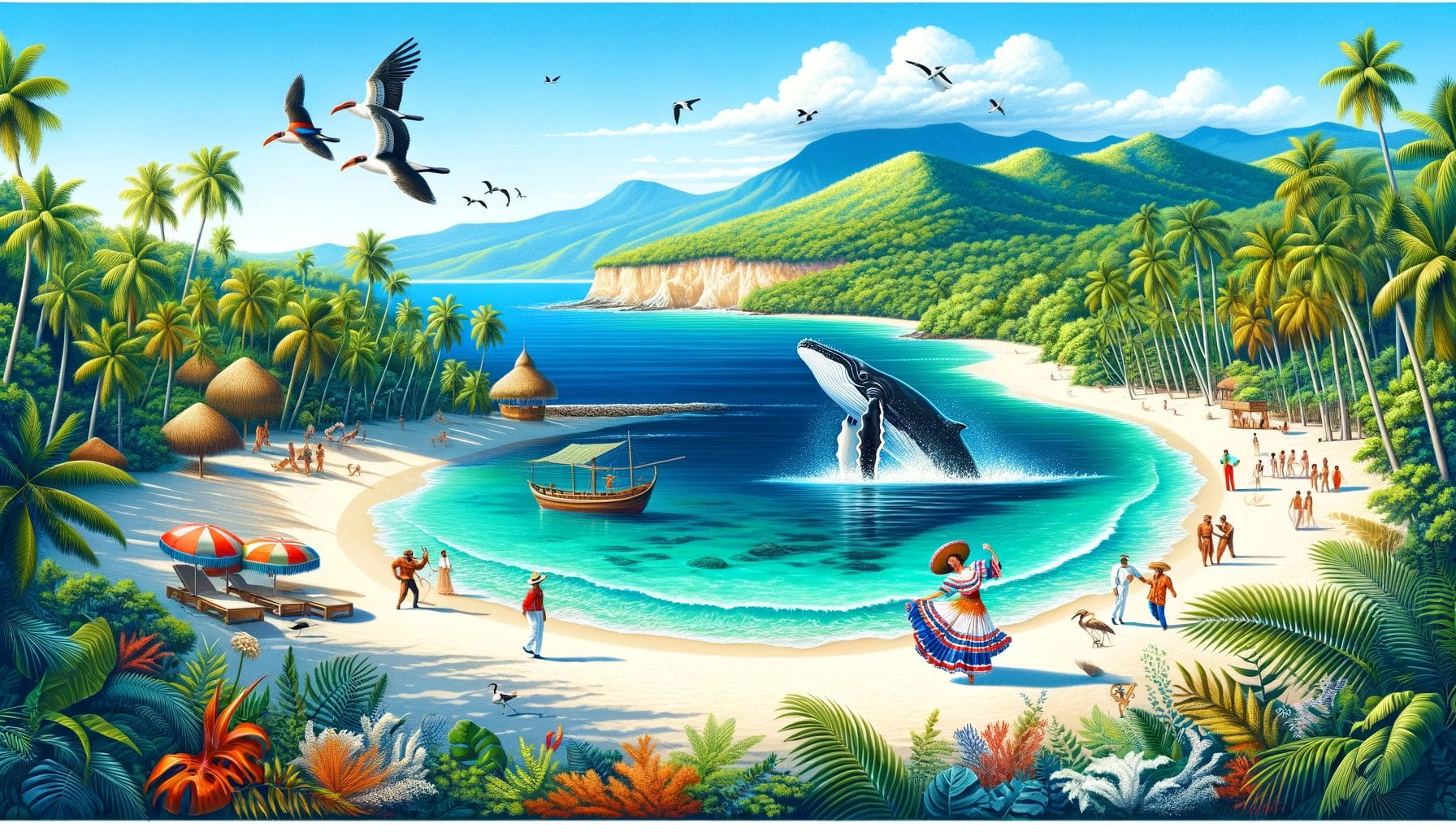
FAQ
Q1: What is the national sport of the Dominican Republic?
A1: The national sport of the Dominican Republic is baseball, which is highly popular and has produced many talented players in Major League Baseball.
Q2: When is Carnival celebrated in the Dominican Republic?
A2: Carnival is celebrated in the Dominican Republic in the month of February. It is a colorful and lively festival filled with parades, music, dancing, and stunning costumes.
Q3: What is the significance of El Limón Waterfall in the Dominican Republic?
A3: El Limón Waterfall is one of the most visited natural attractions in the Dominican Republic. Located in the Samaná Peninsula, it is a 50-meter-high waterfall surrounded by lush greenery, offering a picturesque landscape for visitors to enjoy.
Q4: What language is spoken in the Dominican Republic?
A4: The official language of the Dominican Republic is Spanish. It is widely spoken by the majority of the population and is an integral part of the country’s culture and identity.
Q5: Are families in the Dominican Republic close-knit?
A5: Yes, family is an important aspect of Dominican culture. Dominicans are known for their close-knit families and often prefer to live in joint families, where multiple generations live together. Family values and relationships play a significant role in their daily lives.
